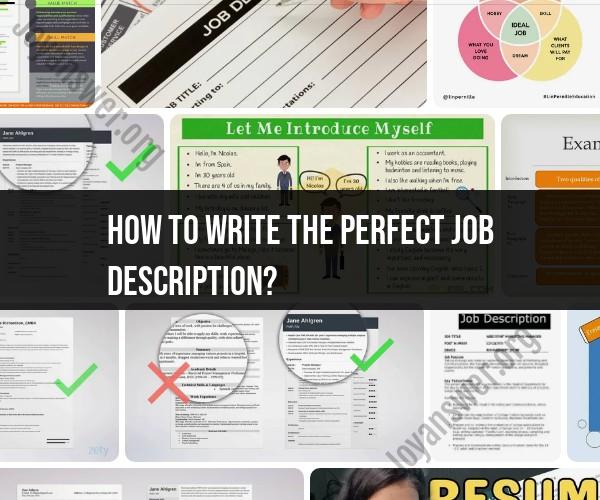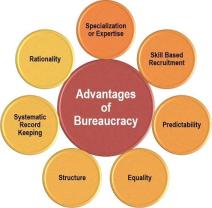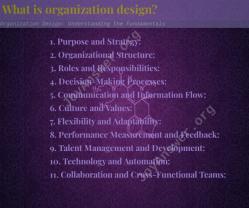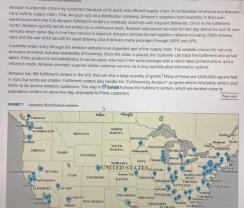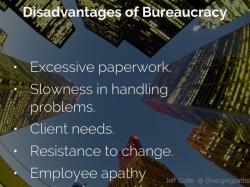How to write the perfect job description?
Writing the perfect job description is crucial for attracting the right candidates and ensuring a successful hiring process. Here are some best practices to help you craft an effective job description:
Clear and Concise Title: Use a clear and specific job title that accurately reflects the role. Avoid using jargon or overly creative titles.
Summary Statement: Begin with a brief, engaging summary of the role and its importance within the organization. This should catch the reader's attention.
Key Responsibilities: List the primary responsibilities and duties of the role in bullet points. Be specific about what the candidate will be expected to do.
Qualifications: Clearly outline the qualifications, skills, and experience required for the position. Distinguish between "must-have" and "nice-to-have" qualifications.
Company Overview: Provide a concise description of your company, its mission, and its culture. This can help candidates understand your organization better.
Location and Schedule: Specify the location of the job and the expected work schedule, including any requirements for remote work or travel.
Salary and Benefits: If possible, include salary range and any notable benefits or perks associated with the position. Some companies prefer to discuss salary during the interview process.
Application Instructions: Clearly explain how candidates should apply, including any required documents, such as a resume, cover letter, or portfolio. Mention the deadline for applications if applicable.
Keywords and SEO: Use relevant keywords and search engine optimization (SEO) techniques in your job description to make it more discoverable on job boards and search engines.
Inclusive Language: Use inclusive language to attract a diverse pool of candidates and promote a welcoming work environment.
Avoid Discrimination: Ensure your job description complies with anti-discrimination laws and best practices. Avoid specifying age, gender, race, or other protected characteristics.
Mobile-Friendly Format: Format the job description for easy readability on mobile devices since many candidates may be browsing job listings on smartphones.
Relevant Metrics: If possible, include specific goals or performance metrics the candidate will be expected to achieve in the role.
Testimonials: Consider including quotes or testimonials from current employees in similar roles to provide a glimpse into the employee experience.
Proofreading: Carefully proofread the job description to avoid errors or inconsistencies that can deter potential applicants.
Legal Compliance: Ensure your job description complies with all relevant labor laws, such as the Americans with Disabilities Act (ADA) and the Fair Labor Standards Act (FLSA).
Continuous Improvement: Regularly review and update your job descriptions to keep them current and reflective of evolving roles within your organization.
Remember that the job description is often the first interaction a candidate has with your company, so it's important to make a positive and informative impression. Tailoring the job description to your specific needs and company culture will help attract candidates who are the best fit for the role.
Crafting the Perfect Job Description: A Step-by-Step Guide
A well-written job description is essential for attracting the right candidates and making the hiring process more efficient. To craft the perfect job description, follow these steps:
- Start by defining the role. What are the key responsibilities and duties of the position? What skills and experience are required?
- Write a clear and concise job title. The job title should be accurately reflect the role and be searchable by potential candidates.
- Describe the company culture. What makes your company a great place to work? What are your values and mission?
- Highlight the benefits of the position. What salary and benefits package are you offering? What opportunities are there for growth and development?
- Include a call to action. Tell candidates how to apply for the position and what to expect next.
The Art and Science of Writing Effective Job Descriptions
Writing effective job descriptions is both an art and a science. There is no one-size-fits-all approach, but there are some key principles that can help you write job descriptions that attract top talent.
One important principle is to be clear and concise. Candidates should be able to quickly understand the key responsibilities and duties of the position, as well as the skills and experience that are required.
Another important principle is to be honest and transparent. Don't sugarcoat the role or make promises that you can't keep. Set realistic expectations and be clear about the challenges that the position may entail.
Finally, be sure to highlight the benefits of the position. What makes your company a great place to work? What salary and benefits package are you offering? What opportunities are there for growth and development?
Key Elements for Creating Compelling Job Listings
Here are some key elements for creating compelling job listings:
- Use strong action verbs. When describing the job duties and responsibilities, use strong action verbs that convey the importance of the role.
- Be specific. Don't just say that you're looking for someone with "experience in customer service." Instead, be specific about the types of customer service tasks that you need the person to be able to perform.
- Highlight the benefits of the position. What makes your company a great place to work? What salary and benefits package are you offering? What opportunities are there for growth and development?
- Write to your target audience. Tailor your job description to the specific type of candidates that you're trying to attract. For example, if you're hiring for a technical role, be sure to use technical jargon in your job description.
- Proofread carefully. Before you post your job description, be sure to proofread it carefully for any errors in grammar or spelling.
Attracting Top Talent with Well-Crafted Job Descriptions
A well-written job description can help you attract top talent by:
- Clearly communicating the requirements of the position. This will help you avoid wasting time on candidates who are not qualified for the role.
- Highlighting the benefits of the position. This will help you attract candidates who are interested in what your company has to offer.
- Creating a positive impression of your company. A well-written job description can show potential candidates that your company is professional and well-organized.
Job Descriptions That Set the Stage for Success
A well-written job description can also help to set the stage for success by:
- Helping to ensure that you hire the right person for the job. When candidates have a clear understanding of the requirements of the position, they are more likely to be successful in the role.
- Helping to manage expectations. A well-written job description can help to ensure that both the candidate and the employer have realistic expectations of the role.
- Helping to create a positive onboarding experience. A well-written job description can help new employees to get up to speed quickly and efficiently.
By taking the time to write a well-crafted job description, you can increase your chances of attracting top talent and hiring the right person for the job.
